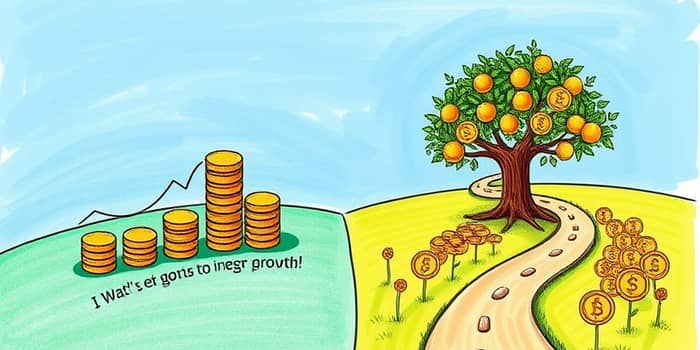
Investing is an art that balances time, risk and reward. At its core, it can be divided into short-term strategies and long-term approaches. Each path serves distinct goals and suits different temperaments.
Navigating these options effectively is a fundamental decision that shapes your financial future and aligns with your personal aspirations and risk profile.
Short-term investing typically refers to holding assets for less than three years. Some definitions extend up to one to three years, but the focus remains on quick access to funds and capital preservation.
This approach emphasizes liquidity and minimal volatility. Because the holding period is brief, investors prioritize safety and predictable returns over high growth. Funds can be redeployed quickly when needed.
Short horizons mean limited time to recover from downturns. Even a mild market dip can erode gains before recovery. Returns are generally lower, and after accounting for taxes and fees, they may not outpace inflation. Over-reliance on these instruments can hamper wealth accumulation over decades.
Long-term investing involves holding assets for at least five years, and often extends over decades. This horizon aligns with major life goals like retirement, children’s education or building generational wealth.
Key objectives include capital growth over extended periods and leveraging the power of compounding returns. By staying invested through market cycles, investors benefit from reinvested dividends, interest and capital gains that accrue exponentially over time.
Typical products for long-term allocation are stocks, equity mutual funds, index funds, exchange-traded funds (ETFs), real estate and retirement accounts such as IRAs or 401(k) plans.
While long horizons smooth out volatility, they expose capital to short-term market swings and macroeconomic shocks. Liquidity is lower, making these investments less suitable for unplanned emergencies. Investors must maintain discipline to endure volatility and market swings without reacting impulsively to temporary downturns.
Investing success is often about mindset rather than market timing. It’s the benefits of patient investing that differentiate outcomes. Watching daily price swings can provoke anxiety and impulsive decisions, undermining long-term progress. Adopting a disciplined, systematic approach can ease emotional stress.
For short-term funds, prioritize instruments with high stability and immediate access. Avoid parking critical near-term cash in volatile assets that can slip in value when you least expect it. For your long-term bucket, embrace assets with higher growth potential and hold through market cycles.
Regularly review your portfolio to ensure it remains aligned with evolving goals. Rebalance periodically to maintain your target asset mix, and consider automatic contributions to harness dollar-cost averaging. A clear plan helps thwart impulsive moves during market turbulence.
Avoid chasing quick profits through speculative trades or market timing. Such behavior often leads to buying high and selling low. Similarly, don’t underestimate the extraordinary impact of compounding over decades. Small, consistent investments can snowball into significant wealth over time.
Above all, resist making emotional decisions that derail your strategic plan. Whether you choose short-term safety or long-term growth—or a blend of both—staying true to a well-considered approach will yield the greatest financial resilience and confidence.
Your path depends on your unique financial story. By carefully weighing your timeframe, goals and risk tolerance, you can craft a strategy that empowers you to meet near-term needs while building a legacy for the future. Start today, stay disciplined and let time work in your favor.
References













